Exploring the best of Ho Chi Minh City
Come with us as we discover the best of Ho Chi Minh City including Ho Chi Minh accommodation, best places to eat in Ho Chi Minh and Ho Chi Minh things to do.
Why Visit Ho Chi Minh City, Vietnam?
Ho Chi Minh City, also known as Saigon, is the vibrant and bustling heart of southern Vietnam. This metropolis offers a unique blend of historical significance, modern attractions, and cultural experiences that make it a must-visit destination for travellers from the UK. From its rich history and cultural heritage to its thriving culinary scene and lively nightlife, Ho Chi Minh City is a place where tradition meets modernity, providing an unforgettable travel experience. Here’s an in-depth guide on why UK tourists should visit Ho Chi Minh City and a detailed week-long itinerary highlighting the best activities to experience.
Reasons to Visit Ho Chi Minh City
1. Historical and Cultural Significance
Ho Chi Minh City has a profound historical background, being a crucial player in Vietnam’s past. Landmarks like the War Remnants Museum, the Reunification Palace, and Notre-Dame Cathedral Basilica of Saigon offer deep insights into the country’s history, especially during the Vietnam War. The city’s architecture, from French colonial buildings to modern skyscrapers, reflects its diverse cultural influences.
2. Vibrant Culinary Scene
The city is a paradise for food lovers. Ho Chi Minh City offers an incredible range of culinary experiences, from delicious street food to high-end dining.
Classic dishes like pho, banh mi, and fresh spring rolls are staples, but the city’s food scene also includes a variety of international cuisines, trendy cafes, and upscale restaurants. Cooking classes are available for those who wish to take a piece of Vietnamese cuisine back home.
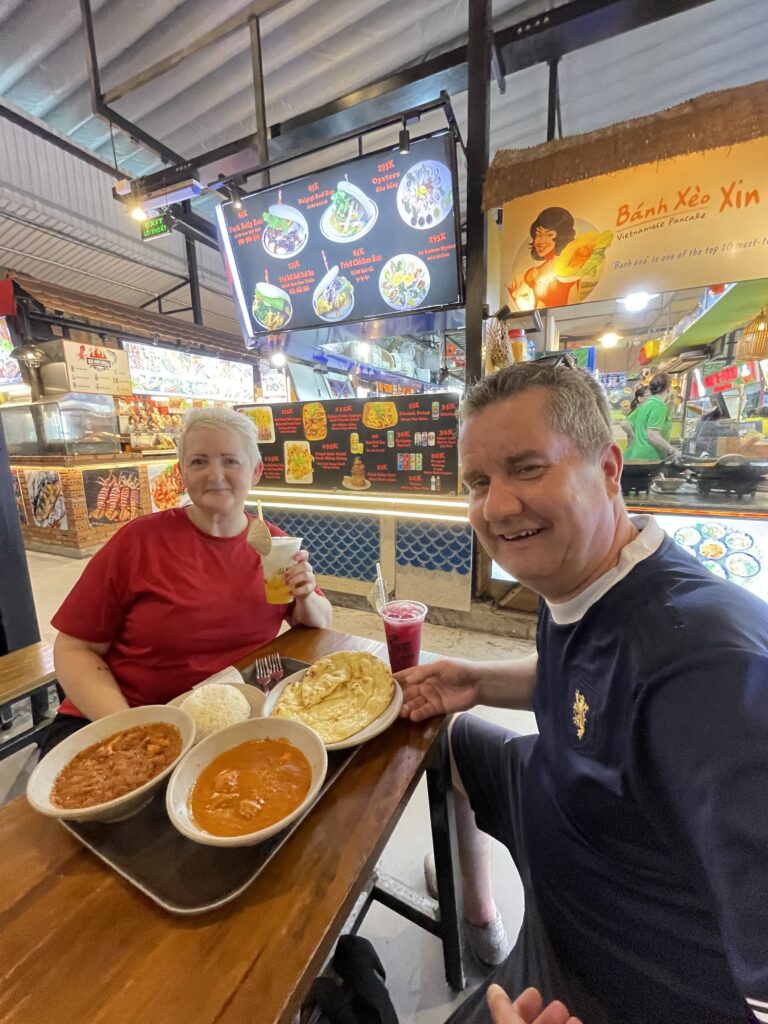
3. Shopping Destinations
Whether you’re looking for high-end fashion, local crafts, or bustling markets, Ho Chi Minh City has it all. Ben Thanh Market is a must-visit for souvenirs and local goods, while Dong Khoi Street offers a more upscale shopping experience with designer boutiques and chic stores.
4. Thriving Nightlife
The nightlife in Ho Chi Minh City is as dynamic as its day-to-day life. From sophisticated rooftop bars with stunning views of the skyline to lively nightclubs and traditional music venues, there is something for everyone. District 1 is the epicentre of nightlife, with a plethora of options for evening entertainment.
5. Exciting Day Trips and Excursions
The city serves as a gateway to several fascinating day trips. The Cu Chi Tunnels offer a glimpse into the ingenuity and resilience of the Viet Cong during the war, while the Mekong Delta provides a peaceful escape with its lush scenery and floating markets. These excursions provide a well-rounded experience of southern Vietnam’s natural beauty and historical depth.
Seven-Day Itinerary for Ho Chi Minh City
Day 1: Exploring Historical Landmarks in District 1
Morning: Start your journey with a visit to the War Remnants Museum. This museum offers a stark and moving account of the Vietnam War through photographs, artifacts, and military equipment. Next, head to the Reunification Palace, where you can explore the historical rooms and underground bunkers that played a crucial role during the Vietnam War.
Afternoon: Visit the Notre-Dame Cathedral Basilica of Saigon, an impressive French-colonial building constructed between 1863 and 1880. Across from the cathedral, explore the Saigon Central Post Office, another architectural masterpiece designed by Gustave Eiffel. Take a break at a nearby cafe and enjoy a traditional Vietnamese coffee.
Evening: For dinner, visit Nha Hang Ngon, a restaurant that offers a variety of Vietnamese dishes in a charming courtyard setting. After dinner, head to a rooftop bar like Saigon Saigon Rooftop Bar for a drink and panoramic views of the city.
Day 2: Discovering Markets and Chinatown
Morning: Start your day at Ben Thanh Market, the city’s most famous market. Browse the stalls for local goods, souvenirs, and fresh produce. Don’t miss the opportunity to try some street food for breakfast, such as banh mi or pho.
Afternoon: Take a taxi or cyclo to Cholon, Ho Chi Minh City’s Chinatown. Visit the Thien Hau Temple, dedicated to the Chinese sea goddess Mazu. Wander through the bustling Binh Tay Market, where you can find a variety of goods ranging from textiles to electronics.
Evening: Dine in Cholon at a traditional Chinese-Vietnamese restaurant. Try dishes like dim sum or roast duck. After dinner, explore the vibrant streets of District 1, perhaps stopping by a live music venue or bar.
Day 3: Mekong Delta Excursion
Full Day: Book a day trip to the Mekong Delta. These tours typically include a boat ride through the delta’s intricate network of rivers and canals, visits to local villages, and the opportunity to see traditional crafts and sample local delicacies. The Mekong Delta is known for its lush landscapes, floating markets, and friendly locals.
Evening: Return to Ho Chi Minh City and relax with a quiet dinner at your hotel or a nearby restaurant.

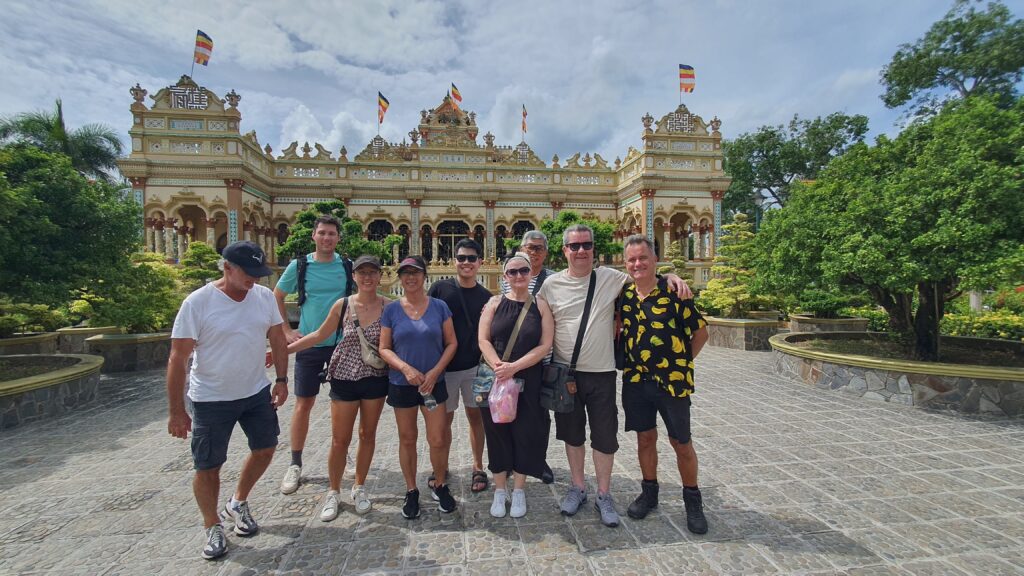
Day 4: Cu Chi Tunnels and Cao Dai Temple
Morning: Take a half-day tour to the Cu Chi Tunnels, a vast underground network used by Viet Cong soldiers during the Vietnam War. You can explore the tunnels and learn about the strategies and hardships faced by the soldiers.
Afternoon: Continue your tour with a visit to the Cao Dai Temple in Tay Ninh, the center of Cao Dai religion, which combines elements of Buddhism, Christianity, and Confucianism. The temple’s architecture is colorful and unique, and visitors are welcome to observe a worship service.
Evening: Return to Ho Chi Minh City and have dinner at a local restaurant. Try traditional Vietnamese dishes like com tam (broken rice) or bun thit nuong (grilled pork with vermicelli noodles).
Day 5: Museums and Cultural Sites
Morning: Visit the Ho Chi Minh City Museum of Fine Arts, housed in a beautiful colonial-era building. The museum showcases a wide range of Vietnamese art, from ancient to contemporary.
Afternoon: Head to the Jade Emperor Pagoda, a Taoist temple known for its intricate carvings and statues. Next, visit the Ho Chi Minh City Museum, which offers a fascinating look at the city’s history and development.
Evening: Dine at a restaurant that offers a mix of Vietnamese and international cuisine, such as The Deck Saigon, which overlooks the Saigon River. After dinner, enjoy a traditional water puppet show at the Golden Dragon Water Puppet Theatre.
Day 6: Day Trip to Vung Tau
Full Day: Take a day trip to Vung Tau, a coastal city about 100 kilometers from Ho Chi Minh City. Enjoy the sandy beaches, visit the Giant Jesus statue, and explore the White Palace. Vung Tau is also known for its fresh seafood, so be sure to try some local dishes.
Evening: Return to Ho Chi Minh City and unwind with dinner at your hotel or a nearby restaurant.
Day 7: Shopping and Relaxation
Morning: Spend your last day shopping for souvenirs and gifts. Visit Dong Khoi Street, which is lined with boutiques, art galleries, and high-end stores. For more affordable options, check out Saigon Square or An Dong Market.
Afternoon: Relax with a spa treatment at one of Ho Chi Minh City’s many spas. Treat yourself to a massage, facial, or other wellness services.
Evening: Enjoy a farewell dinner at a fine dining restaurant like The Refinery or Hoa Tuc. Reflect on your week-long adventure and the unforgettable experiences you’ve had in Ho Chi Minh City.
Practical Tips for Visiting Ho Chi Minh City
Best Time to Visit
The best time to visit Ho Chi Minh City is during the dry season, from December to April. The weather is warm and sunny, making it ideal for sightseeing and outdoor activities. The rainy season, from May to November, can bring heavy rains and occasional flooding, but it’s still possible to enjoy the city during this time.
Getting Around
Ho Chi Minh City is a sprawling metropolis, but it’s relatively easy to get around. Taxis and ride-hailing apps like Grab are convenient options. For short distances, consider walking or using a cyclo, a traditional Vietnamese bicycle taxi. Motorbike rentals are also available, but be cautious as traffic can be hectic.
Currency
The official currency in Vietnam is the Vietnamese Dong (VND). ATMs are widely available, and most hotels, restaurants, and shops accept credit cards. It’s advisable to carry some cash, especially for smaller purchases and at local markets.
Language
Vietnamese is the official language, but English is widely spoken in tourist areas. Learning a few basic Vietnamese phrases can enhance your experience and help you connect with the locals.
Safety
Ho Chi Minh City is generally a safe destination for travelers. As with any travel destination, it’s important to take standard precautions such as keeping an eye on your belongings, avoiding poorly lit areas at night, and being cautious when crossing the streets.
Ho Chi Minh City Accommodation
Ho Chi Minh Things To Do
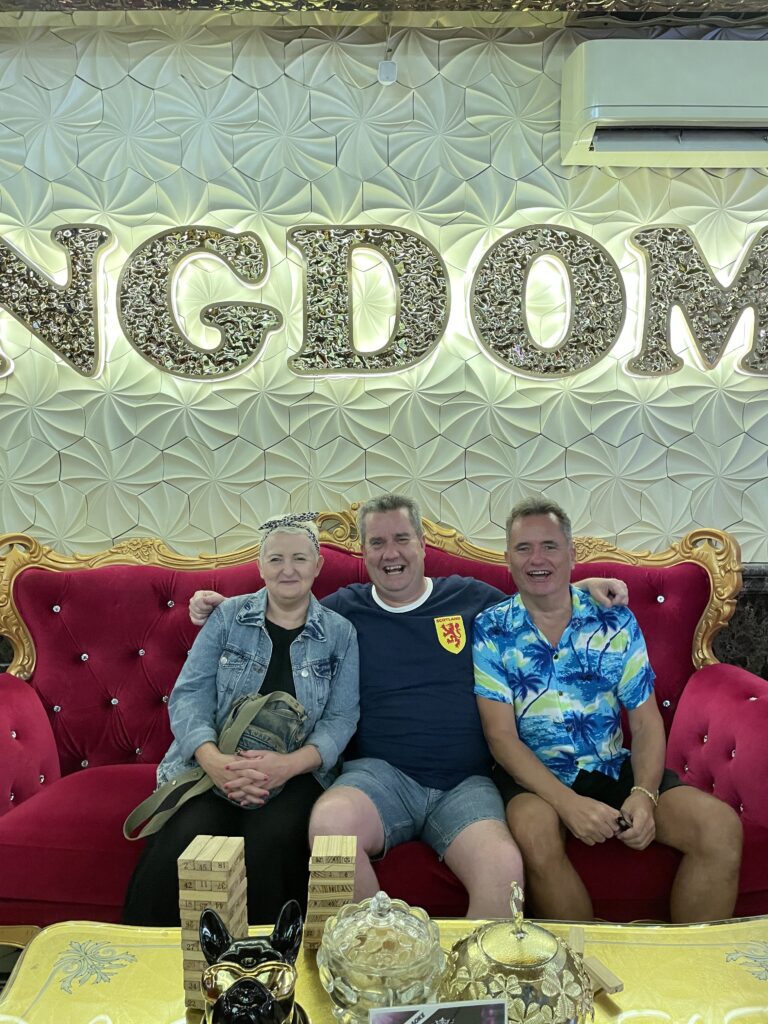
Be Careful : There’s a world of difference between place where you can join in singing and a place where you pay for your own private room to sing!
Ho Chi Mingh Places To Eat
Ho Chi Minh Bars
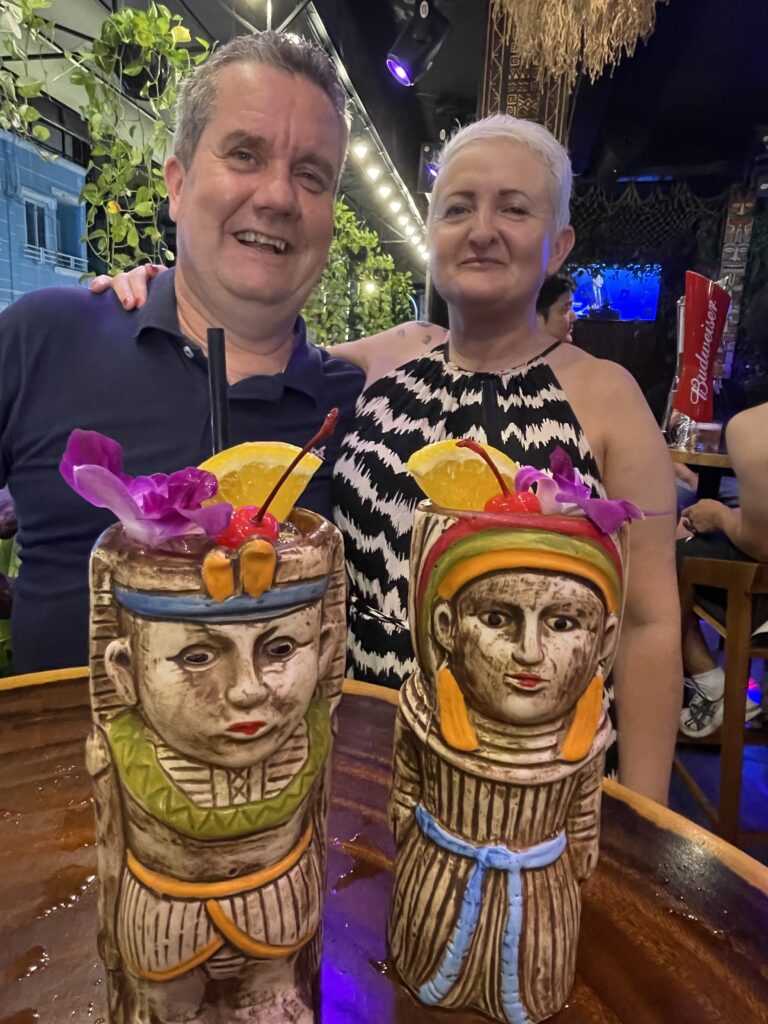
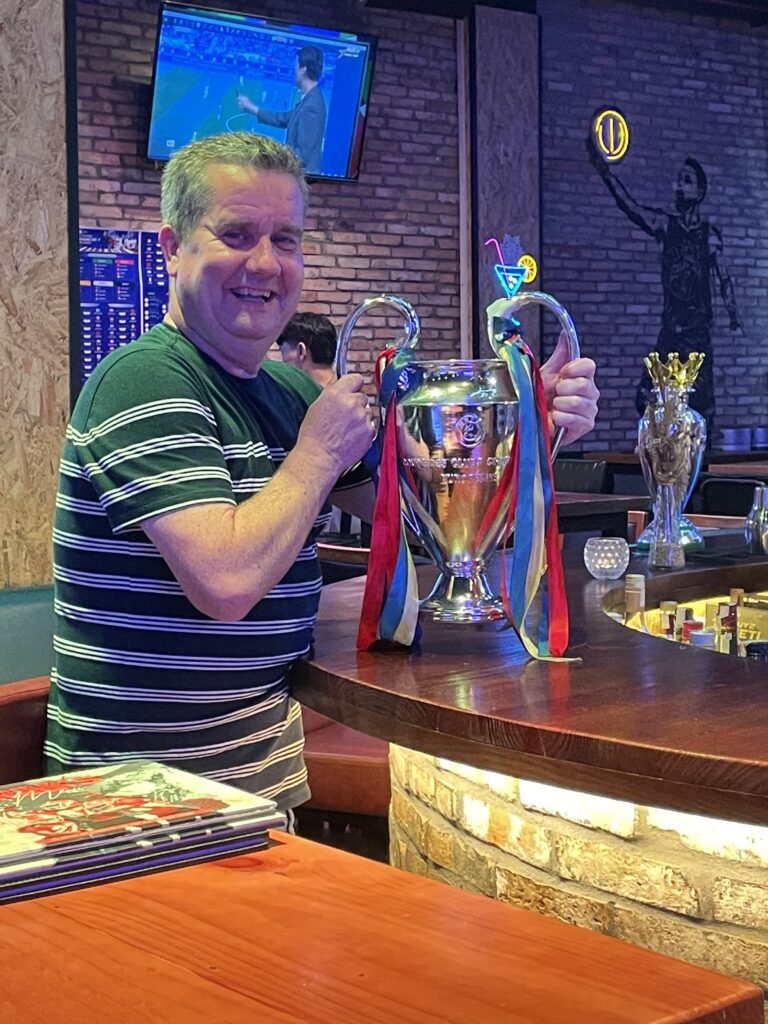
Retirement Club

Get help to protect and grow your business faster

Find out more about Corporate membership
